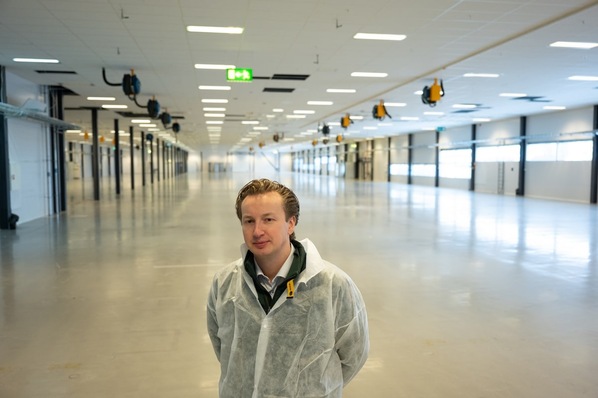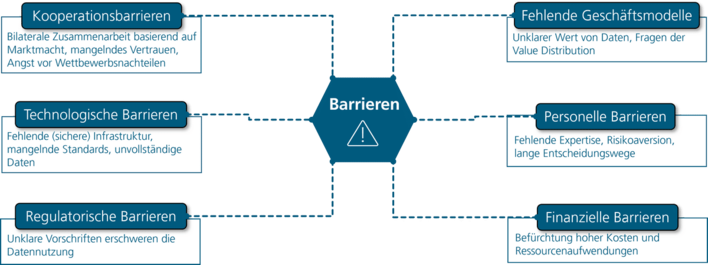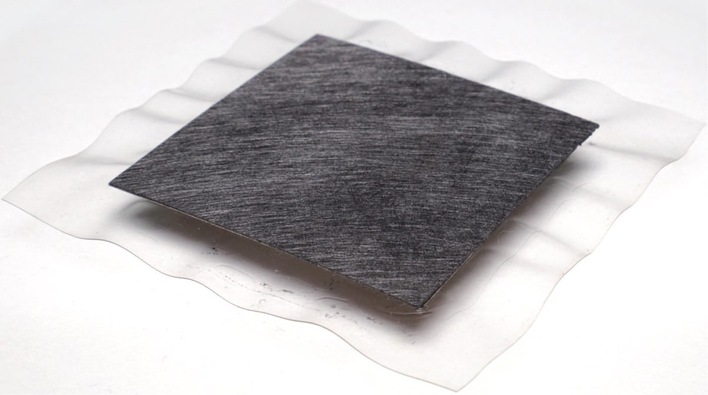Blue-green algae do not have a good reputation. When they emerge in lakes visited by bathers, their toxic metabolites can cause dizziness and breathing difficulty. But they are the basis for all life on earth. And these special microbes are not actually algae at all, but bluish bacteria – today, therefore, they are also known as cyanobacteria.
Billions of years ago, they developed the ability to convert sunlight into energy and to store it. It is only thanks to this process, photosynthesis, that more complex forms of life have been able to develop.
Today, researchers are trying to use photosynthesis to produce hydrogen in an environmentally friendly way. For this, they are focusing on certain enzymes, specifically hydrogenases, that can originate from blue-green algae or “real” algae.
Hydrogen via photosynthesis
The process of photosynthesis occurs in several steps. In so-called photosystem I, sunlight sets energetic electrons free. Normally, the cell would use these to store energy in the form of sugars in further steps. The enzyme hydrogenase can capture these electrons and bind them to H+ ions instead, which are available everywhere in the cell. This is how hydrogen is biologically produced from sunlight.
This process is a relic from times when completely different conditions prevailed on earth. “We can encourage this metabolic pathway by putting the algae on a type of sulfur diet in an airtight container. After they have consumed the oxygen, they begin to produce hydrogen, which rises in small bubbles,” illustrates Christina Marx of the photobiotechnology working group at Ruhr-Universität Bochum (RUB).
The search for the perfect enzyme
Also Kirstin Gutekunst, professor in molecular plant physiology at Universität Kassel, emphasizes, “No organism has an interest in primarily producing hydrogen for humans.” To promote hydrogen production, they therefore have to artificially join the hydrogenase to photosystem I. A major challenge in this is that the hydrogenase is sensitive to and reacts with oxygen, which also evolves from the water splitting during photosynthesis.
Marx, Gutekunst and other researchers are therefore in the laboratory searching for microorganisms, enzymes and other biological components that produce as much hydrogen as possible yet at the same time are not destroyed by oxygen.
In 2020, Gutekunst had led the research group at the Christian-Albrechts-Universität zu Kiel (CAU) that succeeded in inducing the process in a living cyanobacterium for the first time. The advantage of this is that the bacterium can repair itself, so the process is more stable. Also the H2 yield ended up being significantly higher than in earlier projects. However, the cyanobacteria got the electrons not only from water splitting, but also from sugar. “Either the organism must produce the sugar itself beforehand or we must supply it externally. What we really want is to produce hydrogen exclusively with water and sunlight,” explains Gutekunst.
As part of her professorship in Kassel, she is continuing the research towards finding suitable hydrogenases. “Right now, we’re studying an enzyme from knallgas bacteria. It is fairly resistant to oxygen. Unfortunately, it takes up H2 rather than producing it,” says Gutekunst. That’s why her team is working in parallel with different mutations – always in search of the all-rounder.
The Arbeitsgruppe Photobiotechnologie team around Prof. Thomas Happe at the RUB, to which Marx belongs, is also looking for the perfect enzyme for hydrogen production. Together with the University of Osaka, the researchers at the RUB want to understand the structures and mechanisms even better, by looking at cryogenic enzyme samples and other biological building blocks under the electron microscope. Their goal is not only to make the enzymes more active and stable, but also to develop simpler structures, which are easier to use technically.
“We are working on so-called mini-enzymes. These have the function of a hydrogenase, but are smaller and simpler in structure. They contain practically only the active center and the necessary structure to be able to catalytically produce hydrogen as well as split hydrogen. This way, they will also be easier to commercially manufacture and use later on,” says Happe.
A challenge is still the sensitivity to oxygen. Some enzymes, like the CbA5H being studied at the RUB, can shield themselves against oxygen. “This is an important step, because then the active center stays intact,” says Marx. “But as soon as oxygen is present in the environment, it’s kind of like the pause button is pressed and the enzyme doesn’t produce more hydrogen, although like practically all other enzymes is not destroyed by oxygen. Our goal is to develop an enzyme that does not allow oxygen to penetrate into the active center and at the same time still produces hydrogen.”
In order for these enzymes to be used technically, they must be applied to surfaces, and in such a way that they stay a long time and can work as efficiently as possible. The RUB team intend to approach this task in further projects.
Fermentation: Bacteria generate H2 from biomass
The advantage of a fermentation over a photosynthetic approach is that it is significantly closer to commercial use. While researchers are still tinkering with enzyme fundamentals, a small pilot reactor for the project HyPerFerment II is already going into operation. The downside: While water and sunlight are available in practically unlimited quantities, appropriate substrates are required for fermentation.
This involves essentially the same raw materials from which biogas is also produced. “Our goal is therefore to allow hydrogen production to take place before biogas production. In the pre-fermentation stage, the microorganisms break down the substrates only to a small extent. The biogas produced in the next step may even be higher as a result,” says Fabian Giebner, a research associate at the microbiology company MicroPro GmbH and the project leader of HyPerFerment II. In the laboratory tests with maize silage, sugar beet pulp and molasses, the methane production increased by about one third.
The consortium, to which also the plant builder Streicher Anlagenbau GmbH & Co. KG and the automation research institute Fraunhofer Institut für Fabrikbetrieb und -automatisierung (Fraunhofer IFF) belong, has just constructed a10-m3 (350-ft3) test fermenter near a biogas plant in Magdeburg (see Fig. 3). With this, they want to experiment with parameters to find out the optimal modes of operation. Giebner expects the bacteria in the pilot plant to produce at least 4 to 5 kg of hydrogen per day. On top of this is a somewhat smaller amount of CO2. Methane will hardly be produced there, as the predominant organisms that do in biogas plants have no chance at the pH value significantly under 6 and the temperature of nearly 60 °C in the hydrogen fermenter.
For the operators of biogas plants, hydrogen production could be an added business with little additional cost. The substrate should only need to be in the H2 fermenter about three to ten days. That’s one-tenth of the dwell time of the usual biogas plants – correspondingly, the size of the plant can be smaller.
From one kilogram of maize silage, the bacteria in the lab produced about 100 liters of hydrogen. With wheat bran, it was a little less. So if all of the biogas plants in Germany were to be combined with an H2 fermenter, only a few percent of the expected hydrogen demand could be covered.
Therefore, even with a large degree of scaling, it is a question of rather small quantities of hydrogen. This could be used locally for agricultural machinery or trucks, for example. When a larger-scale pilot project is launched in two or three years, it may therefore be accompanied by a small hydrogen fueling station. Before then, however, the hydrogen is to be enriched in the current test plant and fed into the biogas plant so that the organisms there produce more methane.
Microbial FC: Electrons from wastewater
At the sewage treatment plant Kläranlage Châteauneuf-Sitten, researchers from the technical university Fachhochschule Westschweiz-Wallis (HES-SO Valais-Wallis) in Sion, Switzerland recently completed testing of a 1,000-liter microbial fuel cell. With 64 individual cells and 14 meters total length, it is, according to the group, the longest microbial fuel cell system in the world thus far.
On the carbon foam electrodes are settled about ten different microbial species that occur naturally in wastewater. There, they break down the digestible components, very similar to what happens in the activated sludge basin of a normal sewage treatment plant. The difference: In a conventional activated sludge tank, air is blown in with high energy expenditure, because the bacteria need oxygen. This penetrates into the cells and takes up electrons there.
Microbes in the biofuel cell instead pass electrons directly on to the anode. “It is a sort of external respiration. When there was no oxygen in Earth’s atmosphere, bacteria passed off electrons to, for example, oxidized volcanic rock,” says Fabian Fischer, professor in chemical biotechnology at HES-SO Valais-Wallis. The microbial fuel cell therefore not only generates electricity, but also saves energy by eliminating the need to aerate the basin.
Electrons from the anode flow to the cathode – an electric current is generated. The simultaneously occurring hydrogen ions diffuse through the proton exchange membrane to the cathode side. There, electrons and protons come into contact with atmospheric oxygen and react to form water.
The potential for the technology is great – in wastewater treatment as well as power generation. In the wastewater treatment plants of smaller cities of up to 10,000 inhabitants, a biofuel cell could completely replace the current way of treatment in the activation tank. The potential electricity yield lies at 0.2 kWh per inhabitant per day. For this, the bacteria would have to convert about 25 percent of the digestible mass in the wastewater into usable electricity. The pilot plant has so far achieved six to twelve percent. In the next phase of the project, not only the efficiency but also the performance of the cells are to be increased – within the same dimensions, throughput and electricity generation are to grow to twice the amount. Industrial partners should also be in on the project, but none have been named so far.
Author: Eva Augsten









